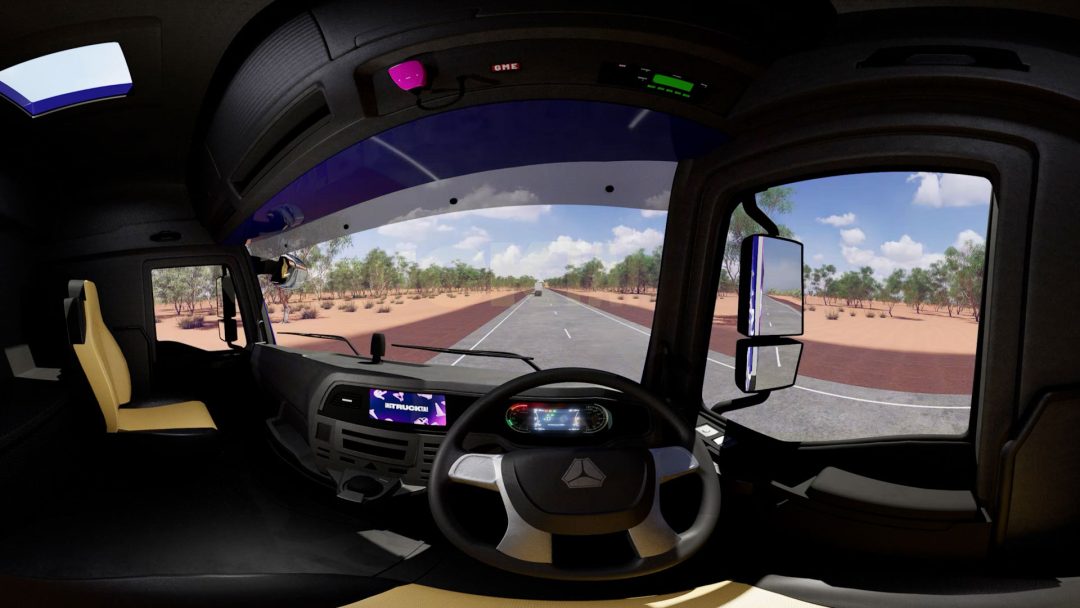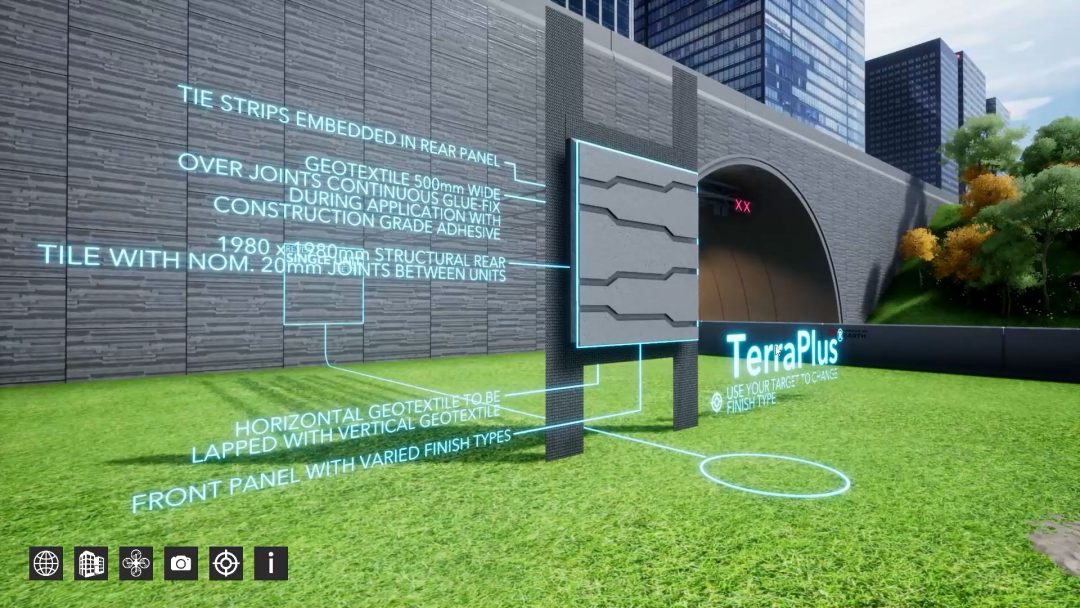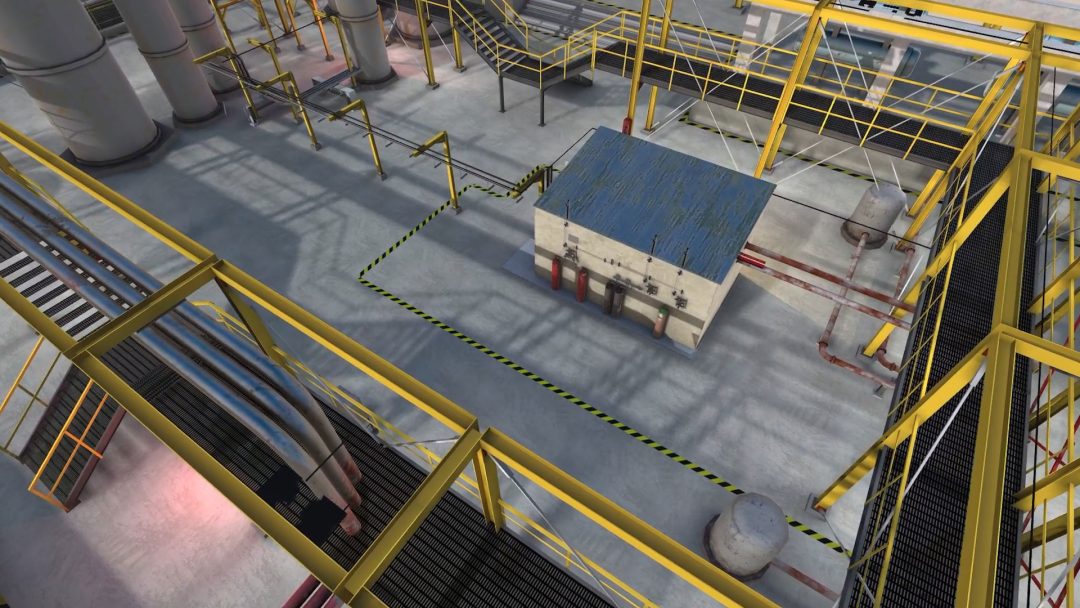VIRTUAL REALITY DEVELOPMENT
We create custom VR applications for businesses across a wide array of industries & using a full range of headsets.


VR Development
Virtual Reality (VR) presents significant advantages for Australian businesses, offering immersive experiences that transcend physical limitations. With VR, companies can transport customers to virtual environments, providing unparalleled opportunities for product exploration and visualisation. This enhances the decision-making process, leading to increased sales and customer satisfaction. VR also revolutionises training programs by creating realistic simulations, allowing employees to practice in safe and controlled environments. This improves skill acquisition, reduces training costs, and minimizes risks. Moreover, VR enables businesses to create impactful marketing campaigns, engaging audiences on a deeper emotional level. By harnessing the power of VR, Australian businesses can unlock new levels of innovation, efficiency, and engagement.
What industry is your business wanting to use VR in?
What are the benefits of Virtual Reality for your business?
Training staff in VR by simulating situations on a computer
Prototyping new products and designs in a simulated real world
Testing how products work, move and interact with their environment
Presenting finished concepts to clients within a VR simulation
Showcasing products and services to customers via a digital showroom
Allowing customers to test and inspect products virtually
Outsourcing customer interactions to AI sales assistants within a digital space
Testing new tools and equipment within a safe environment
Interacting with customers in a simulated digital world
Specialist VR applications including VR dating, therapy, and entertainment
How is VR currently being used by businesses?
Businesses keen to stay at the forefront of technology are already investing in virtual reality. The primary use of VR at the moment is in providing safe, risk-free training. Surgeons use VR training tools to practise complex surgeries on children and test new tools and procedures in a simulated environment. Pilots have been training in VR simulators for decades, but modern advances in VR technology now mean that VR flight simulators are better, cheaper, and more portable than ever before.
Customer-facing businesses are employing VR technology to improve the customer experience and streamline the sales process. Retailers can now showcase their products in realistic, simulated environments to customers all around the world, enabling users to interact with objects in a realistic manner and make informed purchasing decisions before they buy. Rather than visiting a physical showroom, customers can simply use a VR Headset to explore a company’s products in the metaverse.
Manufacturing companies also use VR in the development and design of new products. Virtual reality allows manufacturers to prototype and test new products in a simulated space, reducing the overall costs of prototyping while maintaining high standards of quality assurance. VR prototyping is already commonplace in aviation engineering, but it’s a growing technology across all sectors.

Brainstorm your ideas on 1300 00 3392
If you’d like to receive our full ‘Virtual Reality for Business Information Pack & Price List‘ please add your details below.
VR Case Studies
Frequently Asked Questions
How much does PlayStation virtual reality cost?
In Australia, the PlayStation VR2 console is currently available to preorder, with prices ranging from $879 to $960.
Can you still buy PlayStation VR?
While the original PlayStation VR is still in production, it’s not currently available at any Australian retailers. The upcoming virtual reality headset, the Playstation VR2, is set for release on the 22nd of February 2023.
Does Sony do virtual reality?
Sony is indeed involved in the development and production of virtual reality (VR) technology. Sony has released several VR products, including the PlayStation VR headset, which allows users to experience immersive virtual environments.
In fact, Sony has been deeply involved in the VR and AR (augmented) reality scenes since 1996—and they’re showing no signs of slowing down. It has recently new VR goggles known as the PlayStation VR2, which will open up new opportunities for the current PlayStation 5 console.
Is HoloLens 2 VR or AR?
Hololens 2 is an AR system, with AR glasses differing from virtual reality headsets in one key way. A VR headset blocks out the world around the viewer, leaving only the view of the metaverse and graphical environment around them. Augmented reality glasses, meanwhile, are see-through and mean that people can see both the real world and the virtual landscape.
Is Meta going to be VR?
Yes. The Meta Quest 2 is leading the VR world with its immersive gaming and virtual experience opportunities. Meta’s also working on a high-end VR headset, under the codename “Project Cambria”. This headset will overtake the Quest in terms of its capabilities and will be more suitable for workers who could even replace their laptop or PC with this interactive hardware.
Does the HP Reverb work with SteamVR?
Yes, the HP Reverb is compatible with SteamVR. All you need to do is download and install the Steam app, plug in your HP Reverb G2, and launch the Steam app. Next, click the VR icon within the Steam interface and follow the instructions to connect your headset.
How do I use my HP VR headset?
The HP VR headset is easy to set up. Just connect your headset to a compatible computer using the included cables and install the required software by following the on-screen instructions. Next, turn on your controllers and follow the guide to set up your VR space.
Is HP compatible with VR?
Yes, many of HP’s hardware offerings are compatible with their VR and MR headsets, including many of their desktop PC and laptop models.
Why did Google stop VR?
Google began its VR shutdown in 2019. In its statement, Google claimed there was difficulty encouraging consumers to use their phones for VR, and this meant limited access to apps. The company also said they hadn’t benefited from the reach or adoption among consumers or developers that they’d hoped for. It’s around this time they also open-sourced their Cardboard project.
Does Google have a virtual reality headset?
Yes. The Google Cardboard is an extremely accessible, affordable (available for under $10 on Amazon) headset which users can easily put together themselves before entering into a quality immersive VR experience.
Does Apple have VR glasses?
Not yet, but Apple’s VR and mixed reality headset is in the works. It’s likely to stand up as a strong competitor to established VR headsets in the industry and to be the company’s predecessor to its AR glasses.
Is Apple VR a thing?
Definitely. Apple’s confirmed they’re working on VR, and their proposed headset is rumoured to be a real competitor with the Meta Quest 2, the PSVR 2, and all other leading headsets within the space. The headset’s rumoured to be Apple’s precursor to AR-focused glasses.
Is Amazon working on virtual reality?
Amazon has been working on VR hardware since 2017, and is expected to fight to become one of the world’s leading VR brands. Amazon XR is already widely used for commercial purposes, and we can expect further Amazon MR brands and AR brands to tether more towards entertainment use.
How does Amazon use augmented reality?
Amazon currently allows shoppers to liaise with AR brands to place digital products in the home. This helps consumers to assess if things like the colour or size of an item will work in a room. However, Amazon is expected to grow its Amazon VR and Amazon AR business models further in the near future.
Is mixed reality the future of AR & VR?
Yes. Mixed reality takes the best features of AR and VR and blends them into an incredible user experience. Users can interact with the physical and virtual world seamlessly, with MR replicating their natural behaviour and changes in perspectives. This goes beyond the traditional approaches of VR and AR, which place users within a space or overlay the physical world with additional information.
What are the disadvantages of VR?
VR does have a few notable disadvantages for users, such as the risk of dizziness and nausea when inhabiting the virtual environment. There are also concerns that too much time spent in virtual reality can damage eyesight. Some of the headsets used to enter virtual environments are also quite heavy and uncomfortable to wear.
What is the difference between AR and VR?
Although augmented reality (AR) and virtual reality (VR) are similar in their concept, they have a few notable differences. AR requires a real-world environment to function, whereas VR creates a virtual world. AR allows users to manipulate real-world surroundings, but VR can’t do this. VR uses specialised hardware such as headsets, while AR doesn’t.
What is the price of VR?
Prices for virtual reality vary dramatically depending on the type of virtual reality hardware used. Off-the-shelf virtual reality headsets currently cost anywhere from $400 to $1,000 for a standard VR setup. However, more bespoke options are much more expensive due to the customisation and capabilities of the systems.
Who invented virtual reality?
Virtual reality was initially conceived in 1968 by Ivan Sutherland and Bob Sproull. Together, they created a head-mounted virtual reality display known as the Sword of Damocles that was directly connected to a computer. It was a cumbersome device that was suspended from a ceiling, which is where the name came from.
What is the future of virtual reality?
The future of virtual reality looks very promising thanks to further innovations and technology associated with virtual worlds. Many of the barriers that virtual reality presents, such as motion sickness or asset clipping, will be removed due to improvements in the technology and tools applicable to virtual reality.vr
I have an idea for a VR application but don't know where to start?
That’s an easy one. Our team are used to dealing with very early stage conceptual ideas. We’ll brainstorm the best solution for your business given it’s desires and constraints. Once we’ve decided on the best way forward together we’ll put together a quote and start making your idea a (virtual) reality.



